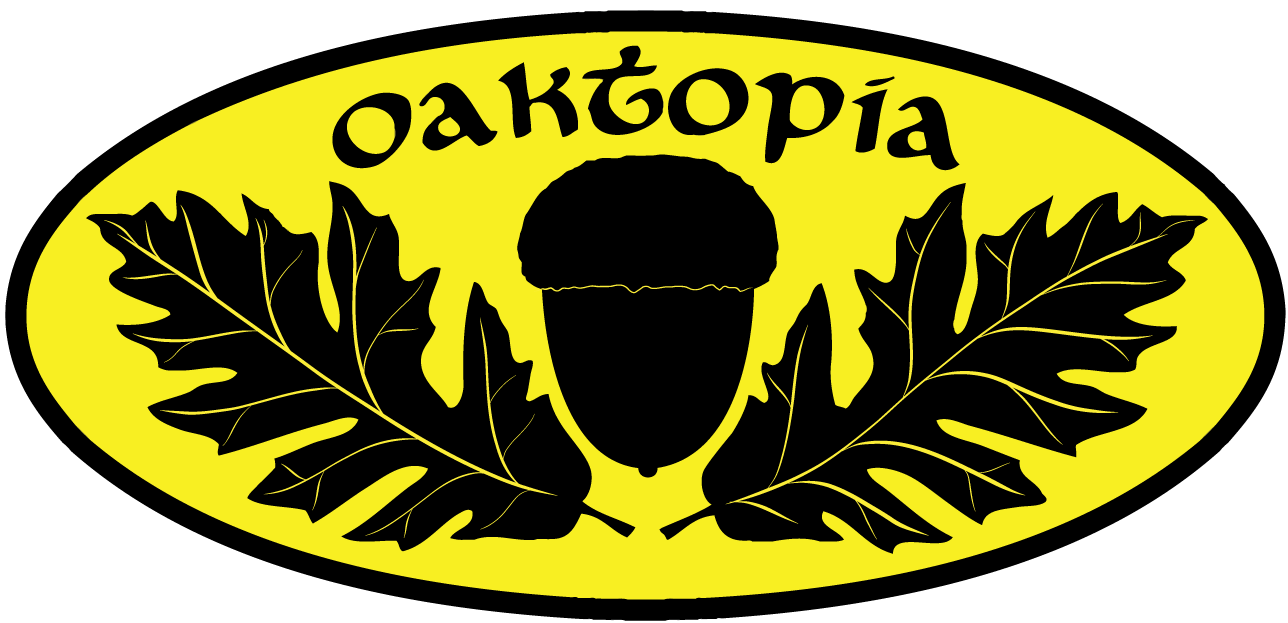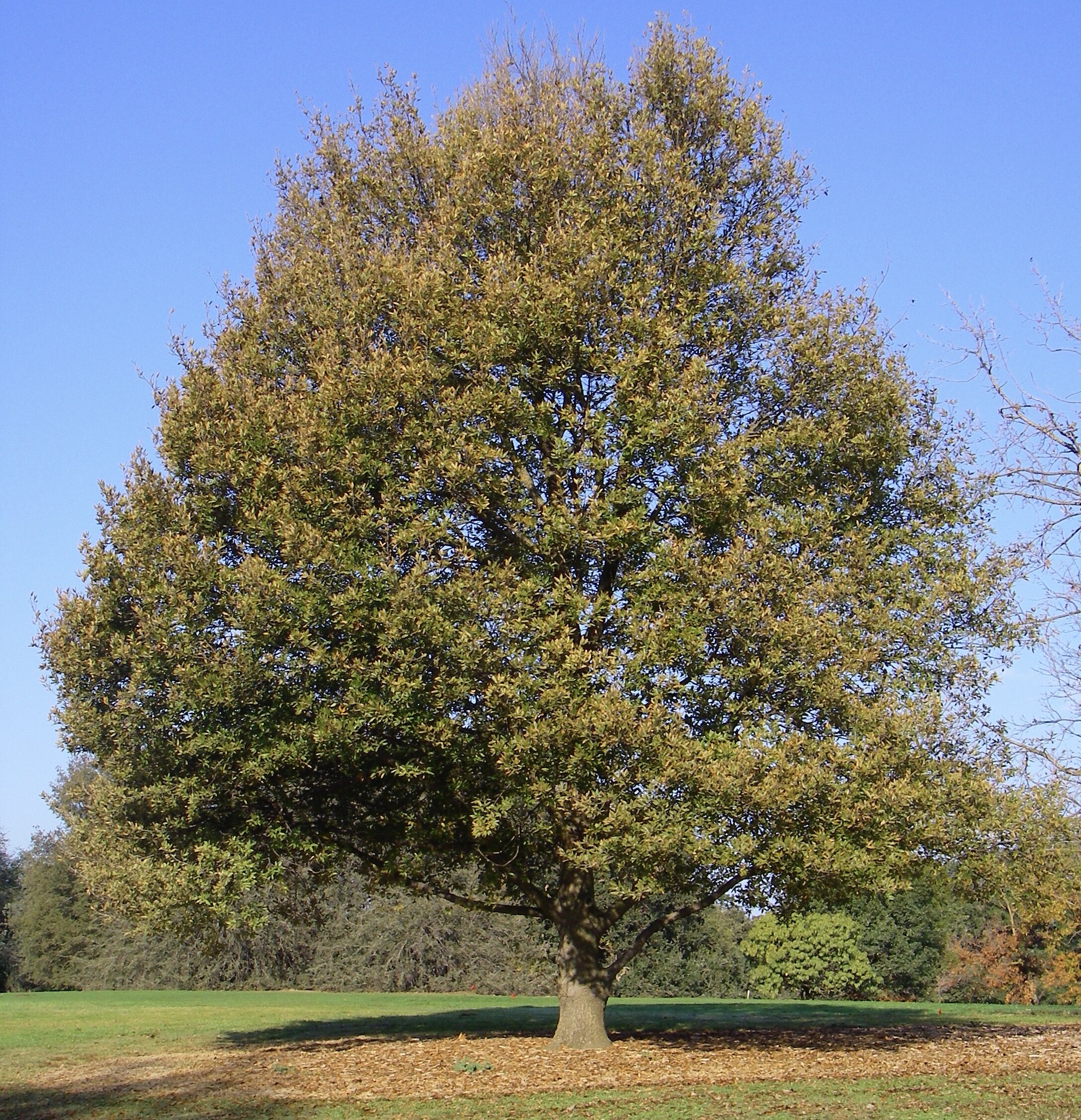Macedonian Oak
Quercus trojana
In Eurasia, there are a series of oaks similar to well-known Turkey oak (Quercus cerris), mostly from more arid climates. These trees are mostly smaller than Turkey oak, with leaves also smaller and more generally pointed. This series of oaks includes the Lebanon oak (Q. libani) and the Macedonian oak (Q. trojana).
Several of these trees are represented in the Shields Oak Grove, but the nomenclature on these trees in the Shields Grove has changed over time. The two larger trees used to be called Quercus macaedonica, now changed to Quercus trojana on signage in the Grove.
Also at the Grove there is a much smaller oak with similar leaves, located on the former lawn at the edge of the current grassland, which has been marked on Shields Grove maps as Quercus trojana for decades. The smaller tree is quite distinct from the larger trees, though they now have the same name. The smaller tree actually fits descriptions of Quercus trojana better, and it is a much more valuable tree.
The larger trees, formerly Quercus macedonica, are fully marcessant, holding all their dead leaves all winter. In the Shields Grove, these trees are located adjacent to a pair of true Turkey oaks (Quercus cerris), one of which produces acorns with regularity. These two Turkey oaks both share an upright to spreading growth habit, some yellow fall color, and the leaves drop cleanly after coloration. In other words, these two Turkey oaks show no marcessance.
But in growing 400 of those Turkey oak acorns into seedlings, all were found to be marcessant for at least the first 5 years of their life. In the harsh Oaktopia nursery, most of these were turned to mulch, but a few of them were grafted with the finest Turkey oak from the University of California, Davis, and survive on to this day at a secret location.
As this section mentions Quercus libani, perhaps it should be admitted that there are no confirmed specimens of Q. libani in California. We do have Quercus trojana, in two strikingly distinct forms, raising real questions about their actual identity. We used to have Q. macaedonica, when that category existed. And we know we have Q. cerris in a characteristically wide range of forms. We in California also have several examples the famous hybrid of Q. cerris and Q. suber. Quercus x crenata, present in Davis, Palo Alto and Santa Barbara, at the least, and these hybrids are likely to perform well in a wide variety of California planting locations. Quercus libani is highly recommended for further trial in California once confirmed propagules can be secured.
Learn More:
-

iNaturalist
See and learn about the tree in the wild…






























